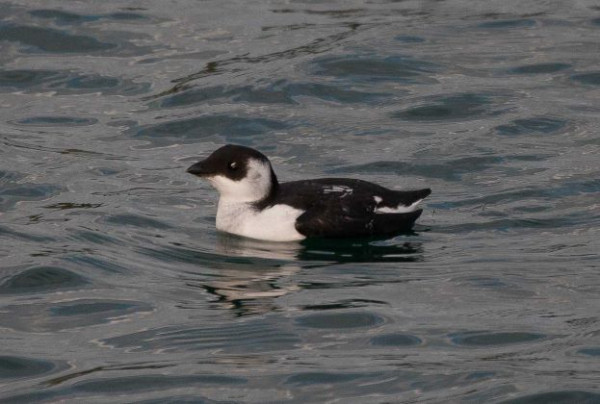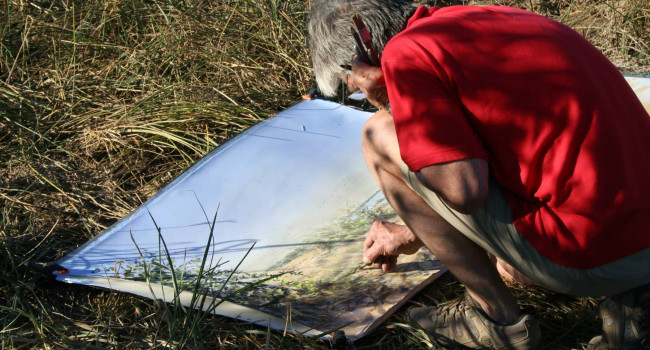
Migration blog – Winter
Scott’s role includes the day-to-day running of BirdTrack: updating the application, assisting county recorders by checking records and corresponding with observers.
Relates to projects
The last couple of weeks have seen some species arriving in good numbers, whilst reports of other species have been much lower than expected. Thrushes are a good example of these contrasting arrivals, with Redwing arriving pretty much as expected compared to past years and indeed in the last week reports have been higher than normal. Fieldfare reports on the other hand fell well below expected levels for the time of year with very few birds seen across Britain and Ireland by the end of October. Maps from the EuroBirdPortal, which uses almost real-time data from a variety of European countries including BirdTrack, showed that compared to last year big numbers of Fieldfare were still in Finland and had yet to leave.
The last week however saw a big upturn in reports with large flocks reported from several locations with birds arriving on a broad front – and more are likely to arrive in the coming weeks as temperatures across Scandinavia remain warmer than normal. Fieldfare was not the only species to arrive later than normal; Brambling typically arrive in mid-October but this year didn’t arrive en masse until last week. Like Fieldfare, this delay in migration is probably due to warmer temperatures and less snow cover enabling the birds to still find sufficient food.
Northerly winds at the end of October and last week saw reports of Little Auk increase, mainly from coastal locations, with the Isle of May recording 646 on the 5th of November. Although the highest counts were from the north some birds were seen further south with Little Auks seen in Cornwall and Kent.
As if to fight back to those that have said (including me) it has been a poor autumn for migration, the past three weeks have seen two absolute mega birds arrive on our shores. Bird of the year and decade for many was a Varied Thrush that spent at least six days in a garden in Papa Westray, Orkney. This represents only the second record for the UK with the first one being way back in 1982 and for many was a species they thought would never occur this side of the Atlantic again. The second was a Nutcracker seen by a single lucky observer in Caithness, Scotland. Many birders will be hoping this will be seen again as it has been 23 years since the last one in Kent and 30 years since the last long-staying twitchable bird in Staffordshire.

Species focus — Little Auk
The Little Auk is the most northerly breeding auk species, with around 90% of the world population breeding in Svalbard and in northwest Greenland. Little Auks spend the winter months at sea to the south of their breeding colonies and in our part of the world, the northern North Sea is an important wintering area.
Little Auks begin leaving their breeding colonies around the end of August, slowly moving towards their wintering areas, where numbers build from October through to December. Little Auk is a scarce visitor to our coasts and during benign weather spend their time out at sea. However, severe storms can result in large numbers being seen close inshore and even on waterbodies inland. This can happen anytime during the winter months.
During extreme weather Little Auk ‘wrecks’ can occur, when thousands of birds can be seen from our coasts and on our beaches, leading to the suggestion that they are simply blown inshore but these influxes may also be associated with food shortages in their normal wintering areas.
The world population is likely to number many millions of individuals across its range.
Right now small numbers of Little Auks are being seen on the east coast from Shetland to Kent and in even smaller numbers along the west coast to Cornwall.
If a severe cold snap ensues on the other side of the North Sea we could see a sudden arrival of several species

Looking ahead
Autumn migration peaks between mid-September and mid-October but that doesn’t mean that birds aren’t on the move outside of this period. For some species, their migration begins in November and into December, and of course, birds will move at any time during the winter months in response to cold weather.
Bewick’s Swans typically begin to arrive in early November and continue throughout the month and Taiga Bean Goose reach their peak in early December. However, most of the winter movements are associated with freezing conditions and are often referred to as cold-weather movements. Several of our wintering wildfowl species can see their numbers swell as a result of cold-weather movements and Smew illustrate this perfectly. If the winter on the continent remains mild we may see very few Smew on this side of the North Sea but if a severe cold snap ensues on the other side of the North Sea we could see a sudden arrival of several species, including Woodcock, Short-eared Owl, Water Rail, Bramblings and Chaffinches and ducks such as Goldeneye, Pintail, Pochard and Smew.
Cold weather can also cause birds to move within the UK and typical species to look out for are Skylark, Lapwing and Golden Plover, Snipe, various ducks but mainly freshwater species such as Mallard, Teal, Gadwall and Shoveler.
Rarities also get caught up in these weather movements and the winter months occasionally serve up some Arctic gems, such as Gyrfalcon, Snowy Owl, Ross’s Gull and Ivory Gull. These are often heralded by the arrival of Glaucous and Iceland Gulls.








Share this page